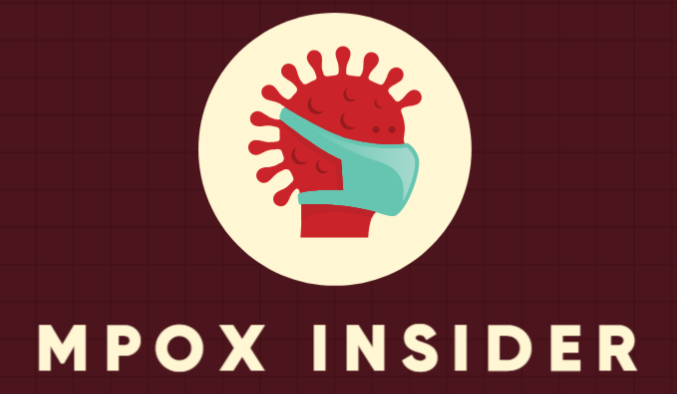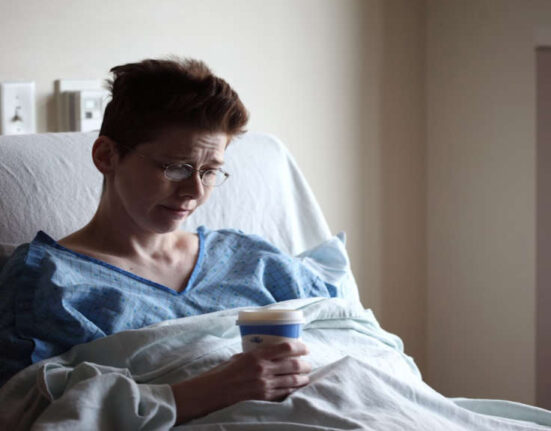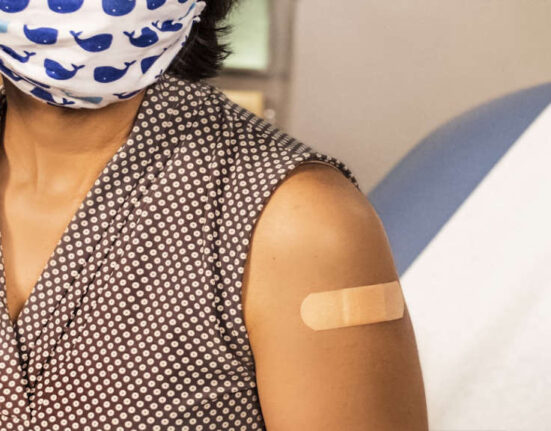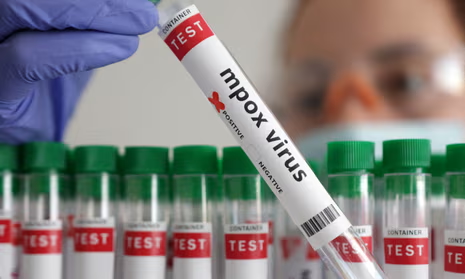In recent years, the world has witnessed a resurgence of interest in viral infections, one of which is Mpox. Although it may seem obscure to some, the implications of this virus are significant, prompting researchers and healthcare professionals to seek innovative solutions. As the medical community continues to understand this virus better, they have made notable strides in developing effective Mpox treatment options. These advances not only focus on combatting the virus itself but also address critical aspects like prevention and patient care. The journey toward effective treatment is ongoing and deserves attention, as it holds the promise of improving outcomes and enhancing the quality of life for those affected.
Main Points
- Overview of Mpox and its implications.
- Recent advances in Mpox treatment guidelines.
- Examining Mpox treatment effectiveness.
- Addressing potential Mpox treatment side effects.
- Strategies for Mpox treatment for severe cases.
- Importance of Mpox treatment and prevention.
- Reviewing patient experiences with Mpox treatment reviews.
Understanding Mpox: Emerging Challenges and Treatment Gaps
In recent years, the emergence of mpox, previously known as monkeypox, has caught the world’s attention. While often overshadowed by other infectious diseases, mpox presents unique challenges that demand our focus. However, the complexity of its transmission, symptoms, and treatment has led to some confusion. Why is it important to understand this disease thoroughly? The answer lies in the potential for effective public health responses and the need for comprehensive care.
What is Mpox?
Mpox is a viral zoonotic disease caused primarily by the mpox virus. It belongs to the same family as smallpox, yet it tends to exhibit milder symptoms. Despite this, the infection can still result in severe health implications, particularly in vulnerable populations. For instance, immunocompromised individuals and young children are often more severely affected. The questions surrounding mpox treatment options and mpox treatment guidelines are becoming increasingly pertinent as outbreaks continue to surface.
Challenges in Diagnosis and Awareness
One of the primary challenges in addressing mpox lies in the diagnostic process. Symptoms can closely resemble those of other viral infections, making accurate diagnosis tricky. Furthermore, raising public awareness about the disease remains a struggle. Many individuals are not yet familiar with mpox or its symptoms, which can lead to underreporting cases. Consequently, this gap can hinder effective public health measures.
Mpox Treatment Effectiveness
When it comes to treatment, the options available are somewhat limited. The mpox treatment effectiveness relies heavily on supportive care rather than a specific antiviral regimen. Patients often benefit from symptomatic management, such as pain relief and hydration. Nonetheless, some antiviral medications have shown promise, and ongoing research aims to refine these treatment protocols. In light of these developments, clinicians and researchers face significant hurdles, particularly regarding:
- Identification of Effective Antivirals: Current research is exploring various antiviral drugs, but definitive treatment options remain elusive.
- Establishment of Treatment Guidelines: As the landscape of mpox continues to evolve, so do the recommendations for care, complicating clinical decision-making.
- Impact of Vaccination: The role of vaccination in preventing mpox is not yet fully understood, and disparities in access to vaccines pose another layer of complexity.
As we delve deeper into the treatment of mpox, we must acknowledge these challenges while fostering dialogue within the medical community. Collaboration across disciplines will be essential to address the gaps in knowledge and treatment. While information is scattered, researchers are working tirelessly to improve our understanding and response to mpox. The road ahead may be fraught with difficulties, yet the commitment to advancing our approach to public health remains paramount. We can make strides toward closing the treatment gaps and enhancing mpox management with sustained effort and awareness.
Recent Breakthroughs in Mpox Treatment: What You Need to Know
In recent years, the medical community has made significant strides in the treatment of Mpox, a viral disease that has raised concerns globally. These breakthroughs not only improve the prospects of recovery for patients but also shed light on the importance of ongoing research in this area. However, with advancements come new information that can sometimes confuse individuals seeking clarity. This article aims to clarify some key aspects of Mpox treatment and its implications.
Understanding Mpox Treatment
Treatment for Mpox has traditionally involved supportive care, focusing on alleviating symptoms and providing necessary health support. More recently, however, innovative therapies have emerged. These include antiviral medications that were initially developed for other viral infections. It’s fascinating how some of these treatments are demonstrating effectiveness against Mpox, indicating a potential shift in how the disease may be tackled in the future.
Side Effects of Mpox Treatment
With any treatment, understanding potential side effects is crucial. The new antiviral options, while promising, are not without their own risks. Mpox treatment side effects can range from mild to severe, depending on the individual’s health status and the specific medication administered. Common side effects may include nausea, fatigue, and sometimes more serious complications. It is essential for healthcare providers to monitor patients closely, especially during the initial stages of treatment.
Treating Severe Cases of Mpox
For those experiencing severe cases, treatment protocols differ significantly. The healthcare team may consider a combination of therapies, which might also involve hospitalization for increased monitoring. Fortunately, breakthroughs in treating more serious symptoms of Mpox have led to a better understanding of effective combinations of therapies. Timely intervention is vital in these situations, as the window for effective treatment may be limited.
Prevention: The Best Medicine
While treatment options are critical, prevention remains an equally important focus. Discussions around Mpox treatment and prevention have gained traction within health circles. Public awareness campaigns and vaccination strategies are crucial initiatives aimed at reducing the spread of this virus. Enabling communities to understand preventative measures, such as personal hygiene and vaccination, can go a long way in curbing transmission rates.
| Treatment Type | Effectiveness | Side Effects |
|---|---|---|
| Antiviral Medications | High | Nausea, Fatigue |
| Supportive Care | Moderate | Minimal |
In summary, the landscape of Mpox treatment is constantly evolving. Staying informed and maintaining open lines of communication with healthcare providers can empower individuals facing this disease. It’s essential not to overlook the importance of prevention in conjunction with treatment strategies. As we collectively move forward in combating Mpox, let’s remember that fostering community understanding and support is as vital as any medical breakthrough.
The Role of Antiviral Therapies in Managing Mpox Outbreaks
In recent years, the world has faced various viral outbreaks, and in this landscape, Mpox has emerged as a significant concern. This disease, often overshadowed by other more infamous viruses, deserves our attention, especially regarding how we can effectively manage its outbreaks. One crucial aspect in this endeavor is the deployment of antiviral therapies.
Understanding Mpox: A Brief Overview
Mpox, caused by the monkeypox virus, presents with symptoms that can range from mild to severe. Symptoms often include fever, headache, and painful lesions on the skin. While some may dismiss it as a lesser threat compared to other viral diseases, its capacity for transmission causes palpable concern, particularly in vulnerable populations. It’s this potential for rapid spread that underscores the importance of managing outbreaks effectively.
How Antiviral Therapies Come into Play
Antiviral therapies play a pivotal role in controlling Mpox. These medications aim to reduce the severity and duration of the disease. While vaccines are essential for prevention, treatments can significantly ease the burden on those already infected. The challenge lies in the fact that not all treatments are equally effective against every virus. This leads to a complex web of decisions regarding which antiviral agents should be employed during an outbreak.
Current Treatments and Their Efficacy
One widely discussed antiviral for Mpox is tecovirimat. This medication has shown promise in clinical settings. While some studies laud its efficacy, others pull back, suggesting a need for more comprehensive reviews. Mpox treatment reviews present a mixed bag of insights. Some reports affirm the drug’s effectiveness, while others indicate that more robust, larger-scale studies are still needed to determine its true potential. This inconsistency can naturally lead to confusion for healthcare providers trying to make informed decisions.
Addressing the Challenges
The use of antiviral therapies is not without its challenges. First, access to these treatments can be geographically and economically limiting. Health systems in wealthier countries often enjoy a plethora of antiviral options, while lower-income regions may struggle with shortages. More concerning is the fact that some antivirals come with side effects that may not sit well with every patient. This leads to a critical consideration: how do we balance efficacy against potential harm?
A Call for Comprehensive Strategies
As we forge ahead in managing Mpox outbreaks, a multi-faceted approach becomes paramount. Antiviral therapies, alongside robust public health measures, vaccination campaigns, and education, can synergistically create a formidable barrier against the spread of the virus. Public health authorities must not only focus on the immediate crisis but also prepare for future outbreaks by investing in research and healthcare infrastructure.
The Importance of Awareness and Preparedness
Ultimately, raising awareness about Mpox and the available treatments is crucial. Communities should be informed about the symptoms and transmission methods of the virus. With a well-informed public, the likelihood of an outbreak escalating can be reduced significantly. Yet, knowledge without action is futile. Therefore, both individuals and health organizations need to stay vigilant and proactive in addressing any signs of an Mpox outbreak.
To sum up, while the role of antiviral therapies is a key component in managing Mpox outbreaks, it sits at the crossroads of many other efforts. By understanding the complexities involved, we can develop more effective strategies that not only address the symptoms but also tackle the broader picture of viral disease management.
Exploring Vaccine Development: A New Hope Against Mpox
The world is always in a state of flux, particularly when it comes to health crises. With the recent rise of mpox, a viral infection that has sparked concern globally, researchers are racing against time. The significance of vaccine development cannot be overstated in this context. It’s not just about creating a product; it’s about offering society a beacon of hope in times of uncertainty.
Understanding Mpox
Mpox, previously referred to as monkeypox, is a disease caused by the mpox virus. Although it was known primarily in Africa, recent outbreaks have raised alarms worldwide. This has initiated serious conversations around epidemiology, public health measures, and, crucially, the need for effective vaccines. Understanding the virus’s transmission and symptoms adds layers to the urgency of developing a suitable vaccine. The symptoms might seem familiar to some—fever, body aches, and a distinctive rash—but the path it takes through the populace is often less straightforward.
The Vaccine Development Process
The vaccine development process is both intricate and time-consuming, often stretching over years. However, the current environment calls for swift action. Here are the typical phases involved in vaccine development:
- Exploratory Stage: This initial phase focuses on basic laboratory research. Scientists identify potential antigens that can provoke an immune response.
- Preclinical Stage: Before human trials, vaccines undergo testing on animals to examine their safety and efficacy.
- Clinical Trials: Here, the vaccine is tested in humans. The trials are usually divided into three phases, ensuring safety and optimal dosage before moving to wider populations.
- Regulatory Review: Once trials conclude, the data is submitted to regulatory bodies to secure approval.
- Manufacturing: Upon approval, the focus shifts to large-scale production. Challenges in this phase can sometimes lead to delays.
The Ongoing Research and Challenges
While many dedicated scientists contribute to vaccine research, several challenges remain. For instance, the nature of the virus itself can evolve, which complicates the development process. The following complexities must be navigated:
- Viral Mutation: Just like any other virus, mpox can mutate, potentially rendering vaccines less effective.
- Global Access: It’s vital to ensure that once developed, vaccines are accessible to all, especially in low-income countries where the impact can be more severe.
- Public Perception: Misinformation and vaccine hesitancy pose significant hurdles. Building trust in communities is crucial for vaccination efforts.
Looking Forward
As researchers and health officials grapple with the realities of mpox, the long-term implications of a successful vaccine could be profound. Not only could it curtail the spread of mpox, but it also might reinforce the infrastructure for addressing future outbreaks of other diseases. Ultimately, it’s about fostering a resilient society that can withstand health crises head-on.
Bearing in mind the complexities involved, one cannot help but feel both optimistic and cautious. The groundwork being laid today could lead to significant breakthroughs tomorrow. In this race against time, let’s remain informed and supportive of the efforts being made. After all, a well-informed public is an empowered public, capable of navigating the challenges of today and tomorrow.
| Phase | Description |
|---|---|
| Exploratory | Initial laboratory research to identify antigens |
| Preclinical | Testing on animals for safety and efficacy |
| Clinical Trials | Testing in humans divided into three phases |
| Regulatory Review | Approval from regulatory bodies |
| Manufacturing | Large-scale production of the vaccine |
As we navigate these uncharted waters together, one thing is clear: the path to a solution is fraught with challenges, but it can also lead to unprecedented advancements in public health.
Patient-Centered Care: Tailoring Mpox Treatments to Individual Needs
In the ever-evolving landscape of healthcare, patient-centered care has emerged as a crucial approach, especially for conditions like Mpox. This paradigm shift emphasizes the importance of individual needs, preferences, and values when crafting treatment plans. So, how do we ensure that treatments for Mpox are not just effective, but also tailored to each person’s unique circumstances?
The Individualized Approach
When considering Mpox, it’s essential to recognize that no two patients are alike. Some may have pre-existing health conditions that complicate treatment, while others might experience different symptoms. For instance, a younger patient might be more resilient and can tolerate a certain therapy better than an older patient with a weakened immune system. Herein lies the beauty of tailored treatments. It’s not just about choosing the latest medication; it’s about listening to patients, understanding their lifestyles, and making informed decisions together.
Communication is Key
Effective communication forms the bedrock of patient-centered care. Patients should feel comfortable discussing their symptoms, treatment preferences, and any concerns that may arise during their Mpox journey. This dialogue fosters trust and ensures that healthcare providers can make informed choices aligned with the patient’s values. But what if that conversation feels daunting? Many people worry about burdening their doctors or feel unsure about voicing their thoughts. This is where healthcare systems must step in, encouraging open conversations that validate patient experiences.
The Role of Multidisciplinary Teams
Another important aspect is the collaboration among healthcare professionals. A multidisciplinary team can offer comprehensive care ways that a singular approach often cannot. For Mpox, this might mean having dermatologists, infectious disease specialists, and mental health professionals working together. While this sounds good in theory, the practical application can be a bit messy. Coordinating schedules, sharing information, and integrating insights can lead to complex dynamics. Yet, the potential benefits for the patient certainly outweigh these challenges. Everyone involved must strive to put the patient at the forefront of their care.
Beyond Medical Treatments
Treatment for Mpox doesn’t stop at medication. Many patients may benefit significantly from psychological support or lifestyle alterations tailored to their needs. Whether it’s managing stress, understanding the social implications of the illness, or even adjusting dietary habits, these holistic aspects are vital. Treatment plans should ideally encompass not just the medical but also the mental and social dimensions of care. Unfortunately, there’s still some reluctance in the healthcare community to embrace this broader perspective. However, advocating for a more integrated approach can lead to better health outcomes and a greater sense of fulfillment for patients navigating their conditions.
In conclusion, patient-centered care represents a pivotal shift in treating Mpox and many other conditions. By embracing an individualized approach, prioritizing communication, fostering collaboration among professionals, and considering the holistic needs of patients, we can create a more supportive and effective healthcare environment. Though challenges exist, the focus remains clear: the patient at the center of care. This philosophy holds the potential not only to enhance treatment effectiveness but also to profoundly impact the patient experience, ultimately making healthcare more human and compassionate.
Innovative Research and Clinical Trials: Paving the Way for Future Therapies
In an era where medical advancements seem to surge forward at an unprecedented pace, innovative research and clinical trials stand as the cornerstone of future therapies. Each new trial illuminates pathways that once seemed shrouded in uncertainty, revealing potential treatments that could transform patient care. However, the path from idea to implementation is often winding and complex.
Understanding the Role of Clinical Trials
Clinical trials act as the bridge between preliminary research and practical applications in medicine. These trials serve to test the efficacy and safety of new treatments, and they can take various forms. Some focus on new drugs, while others might explore medical devices or innovative therapeutic approaches. In this context, participants may find themselves puzzled by the rigorous protocols that govern these trials.
| Trial Phase | Objective | Participants |
|---|---|---|
| Phase I | Safety and Dosage | 20-100 healthy volunteers |
| Phase II | Efficacy and Side Effects | 100-300 patients |
| Phase III | Confirmatory Efficacy | 1,000-3,000 patients |
The diverse phases of clinical trials can be overwhelming. It’s essential to understand that through these stages, researchers not only gather data but also refine their hypotheses. Some may think that all research leads to success. In reality, many promising avenues can result in unexpected outcomes, prompting further inquiry.
“Innovation distinguishes between a leader and a follower.” – Steve Jobs
The Importance of Patient Participation
One of the most critical elements of clinical trials is patient participation. Individuals who volunteer contribute significant value to the research process. This shared journey not only aids scientists in their quest for new treatments but also fosters a sense of hope among patients. It may seem daunting to be part of an experimental study, but many find that taking part brings them newfound camaraderie and purpose.
However, it raises an important question: How can potential participants navigate this complex landscape? The answer often lies in open dialogue with healthcare providers. These professionals can illuminate the intricacies of clinical trials and clarify any uncertainties. Moreover, being well-informed empowers patients to make choices that align with their values and health goals.
Looking Toward the Future
As we anticipate the future of medicine, the role of innovative research and clinical trials cannot be overstated. They not only enhance our understanding of diseases but also help tailor therapies to individual needs. Yet, challenges remain. Funding, ethical considerations, and recruitment issues can impede progress. Nevertheless, the relentless pursuit of knowledge fuels the drive for groundbreaking solutions.
To conclude, innovative research and clinical trials represent a journey filled with potential breakthroughs and sometimes unexpected challenges. By participating in this evolving narrative, both researchers and patients contribute to the mosaic of healthcare. The future, with its array of opportunities, lies waiting to be discovered. Together, let us embrace the possibilities that lie ahead.
Addressing Stigma: The Importance of Education in Mpox Treatment
In recent years, we’ve witnessed the emergence of Mpox, a viral infection that not only threatens physical health but also exacerbates social stigmas. Tackling these stigmas is crucial, and education plays a pivotal role in this process. Educational initiatives can alter misconceptions and foster understanding, making them essential in the realm of Mpox treatment.
The Role of Education in Combatting Stigma
Education serves as a bridge between ignorance and awareness. When communities understand what Mpox is, how it spreads, and the symptoms to watch for, they are more likely to respond compassionately rather than fearfully. This brings us to a few important points:
- Knowledge is Power: When people know how Mpox spreads, they can take measured precautions. Prevention strategies stem from awareness, reducing the likelihood of transmission.
- Dispel Myths: Misinformation thrives in environments void of education. Schools and community centers can serve as platforms to share accurate information, addressing concerns and breaking down the myths surrounding Mpox.
- Foster Empathy: Education encourages dialogues. By emphasizing the human aspect of those affected, we can shift the narrative from one of alienation to understanding.
Challenges to Educational Initiatives
Despite the importance of education, several challenges remain. Many individuals may still harbor biases shaped by outdated information or personal experiences. Addressing these deeply ingrained beliefs takes time and persistent effort.
Furthermore, accessibility to educational resources is uneven. Some communities may lack access to up-to-date information, while others may experience language barriers. This digital divide complicates efforts to reach everyone effectively.
We cannot ignore the influence of culture as well. In some societal contexts, discussing sexually transmitted diseases or viral infections is taboo. Even when information is available, cultural stigma can prevent individuals from seeking education and, consequently, treatment.
Moving Forward
All things considered, the need for education in Mpox treatment is undeniable. However, the path forward requires collaborative efforts from healthcare professionals, educators, and community leaders. They must unite to create inclusive, understandable resources that resonate with diverse audiences.
Ultimately, education is a tool. It empowers communities to rise above fear and stigma, paving the way for more effective treatment solutions. If we prioritize education, we can shape an environment where individuals feel safe seeking help—allowing for a more compassionate response to Mpox and the people it affects.
In summary, addressing the stigma surrounding Mpox treatment through education can transform lives. We must commit to this journey together, fostering a climate of awareness and support.
Global Collaboration: How International Efforts Are Shaping Mpox Solutions
The world today faces numerous challenges, and among them, public health issues often stand at the forefront. The emergence of healthcare threats, such as mpox, requires a concerted global response. Therefore, international collaboration has become crucial in developing effective solutions. Countries, organizations, and researchers are coming together to tackle these challenges.
The Role of International Organizations
International organizations like the World Health Organization (WHO) play an instrumental role in guiding efforts against mpox. They provide frameworks for sharing knowledge, resources, and research findings. By facilitating communication between nations, these organizations enable a swift and coordinated approach to outbreak responses. They also offer support in training healthcare workers and implementing prevention strategies.
Research and Development Efforts
Another significant aspect of addressing mpox is the collaborative work in research and development. Scientists from different countries are pooling their expertise to understand the virus better. However, the complexity of this virus often leads to unexpected findings. For instance, some studies suggest potential zoonotic transmissions, which complicates the picture further. Nevertheless, partnerships among research institutions are yielding innovative solutions.
Community Engagement and Education
Global collaboration is not limited to scientific and organizational efforts. Engaging local communities is essential. Educational campaigns that inform individuals about prevention and symptoms are vital in controlling outbreaks. When individuals are informed, they are more likely to seek help. Yet, misinformation can spread rapidly, creating confusion. Therefore, it is essential that global messaging is clear and unified.
Case Examples of Successful Collaboration
Several instances underscore the effectiveness of international collaboration on disease management. For example, the response to the Ebola outbreak highlighted how countries can unite to combat a virus. Countries shared vaccine research and treatment protocols, leading to successful containment strategies. Such initiatives give hope that similar frameworks can be applied to mpox and other emerging diseases.
| Country | Contribution | Outcome |
|---|---|---|
| USA | Vaccine Development | Reduced Infection Rates |
| Germany | Research Funding | Improved Treatment Protocols |
| UK | Health Education Campaigns | Increased Public Awareness |
Moving forward, it is essential for nations to remain engaged and proactive. Challenges will undoubtedly arise, but the spirit of collaboration holds the potential to yield powerful connections. In this interconnected world, as we pool our resources and knowledge, we can pave the way for a healthier future.
In conclusion, the fight against mpox illustrates how global collaboration can shape effective health solutions. By sharing expertise, fostering community engagement, and learning from past experiences, we enhance our collective capacity to face infectious diseases. We must strive to stay united in this endeavor to ensure a safer world for everyone.
Looking Ahead: The Future of Mpox Management and Treatment Strategies
As we turn our gaze toward the horizon of Mpox management, it becomes clear that the future is not just a continuation of past strategies but a complex tapestry woven from advancements in science, patient care, and societal challenges. At the heart of this evolution lies a pressing need for new treatment modalities and frameworks that prioritize both efficacy and accessibility.
Understanding the Landscape
The recent resurgence of Mpox cases has startled public health systems globally, prompting a reconsideration of how we approach its management. This is not merely about developing new drugs, although that is certainly a part of the equation. It involves a broader look at healthcare infrastructure, patient education, and community support systems. Undoubtedly, integrated care models that combine physical and mental health services will emerge as pivotal in effective management.
Innovative Treatment Approaches
Research into novel therapies is well underway, leading to the exploration of both traditional and alternative approaches. Some scientists advocate for a mix of antiviral medications alongside immunotherapy. Such a combination aims not only to combat the virus but to enhance the immune system’s response. However, exploring these avenues raises crucial questions. What works for one demographic might not be effective for another? Are we prepared to tailor strategies based on cultural and social contexts? The answers may not be straightforward, and adapting to diverse needs will be vital.
The Role of Technology
Technological advancements, particularly in telemedicine and mobile health applications, present exciting opportunities to revolutionize Mpox management. These tools can facilitate continuous patient monitoring and timely interventions, significantly improving treatment outcomes. Yet, it is essential to consider the digital divide. Not everyone has equal access to technology, which can create disparities. Addressing these inequalities will be crucial in creating a comprehensive strategy for the future.
Community Engagement
Furthermore, community engagement will play a critical role in Mpox management strategies. Initiatives that promote awareness and education among high-risk populations can diminish stigma and encourage screening and treatment. Engaging with local leaders and healthcare workers has the potential to foster trust and improve outreach. This paradigm shift emphasizes the importance of a community-centered approach instead of solely focusing on clinical solutions.
Conclusion: The Path Forward
In summary, the future of Mpox management and treatment strategies remains intertwined with numerous variables, from scientific developments to social dynamics. As we forge ahead, we must maintain an open dialogue about the challenges and the innovations shaping this landscape. With ongoing collaboration between healthcare providers, researchers, and communities, we can create a multifaceted and sustainable approach. The road may be winding, but it offers a chance to profoundly enhance the way we manage not only Mpox but other public health concerns as well.
You Can Also Review These:
Mpox Treatment Information for Healthcare Professionals – CDC







